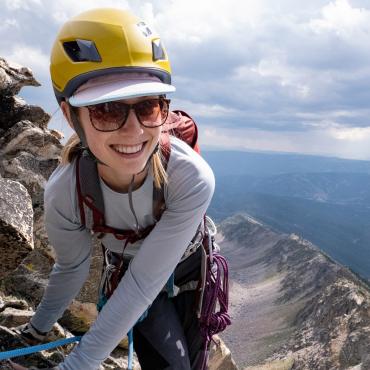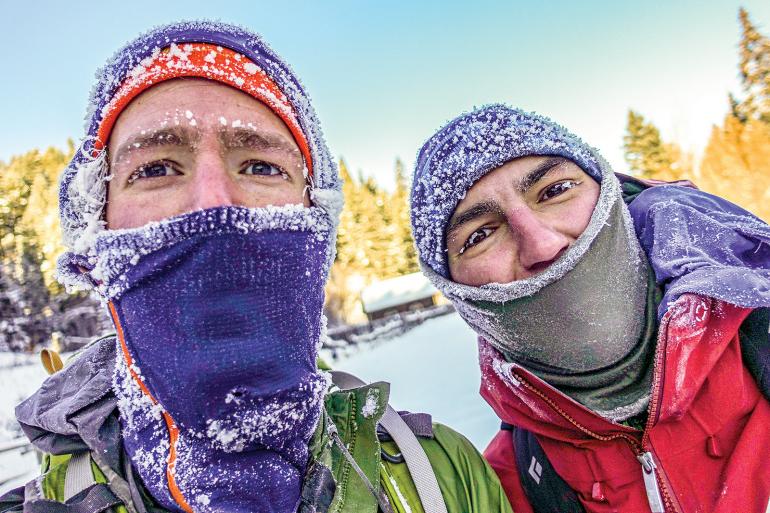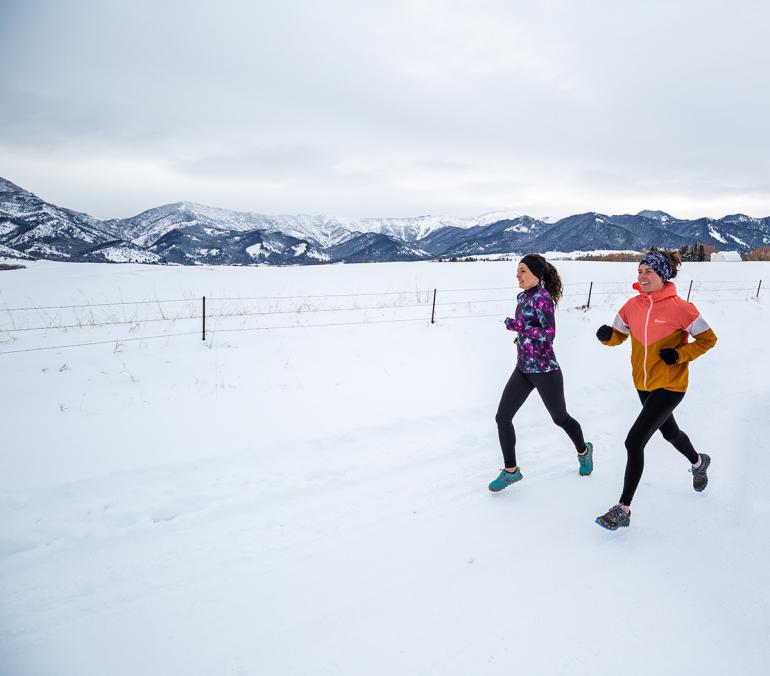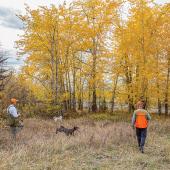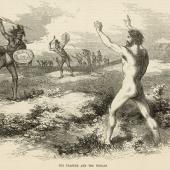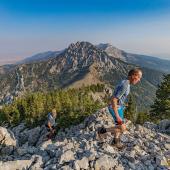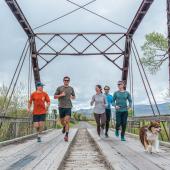Cold-Weather Cardio
A guide to wintertime exercise.
You’re sitting on the couch; it’s cold outside and there’s snow on the ground. You woke up this morning telling yourself you’d go for a run. But surely this is a bad idea—it could be dangerous. So instead, you sip an eggnog latte and hunker down under blankets to start the newest season of The Great British Baking Show. This is the safer option, you tell yourself. But dag gummit, you’ve been drinking an eggnog latte every morning since Thanksgiving, and it’s getting near time for resolutions. You pick yourself up, put on a few layers, tie your shoes, and step outside.
Breathe In
One deep breath immediately sends you into a coughing fit. It feels like your throat is on fire. Is the cold air damaging your lungs? Simply put, no. When you inhale, your airway warms and humidifies the air to body temperature before it reaches your lungs. Exercising in zero-degree temperatures has not been found to cause any damage, and research suggests that even exercising in temperatures well below zero won’t cause any long-term adverse consequences on the lungs.
The irritation you experience is due to dehydration of your airways, as their mucous membranes become dry from warming the air you inhale. You can combat this by wearing a face covering, which traps water vapor that you would otherwise exhale. Also, be sure to stay hydrated. Your lungs won’t be damaged by cold air; your skin, however, can be.
Warm Up
Make sure you’re wearing layers that cover your skin, providing warmth and wicking away moisture. Once the element of water is added, staying warm becomes much harder, and you risk damaging your skin. Layers are also important to block wind. Wind can make temperatures colder than what the thermometer is reading, and can cause frostbite or hypothermia if you’re not dressed properly. Wearing adequate layers can also help limit the amount of vasoconstriction that occurs, helping increase the available nutrients to energize your muscles—more on that shortly.
Exercising in zero-degree temperatures has not been found to cause any damage, and research suggests that even exercising in temperatures well below zero won’t cause any long-term adverse consequences on the lungs.
Because your body is directing more blood to your core in the cold, your arms and legs aren’t getting as much as they normally would. Insufficient blood-flow limits muscle functioning, but a warm-up routine can increase flow to your limbs and improve the response of your muscles. This decreases your chances of getting injured. Ideas for warm-up include dynamic stretching or yoga inside, and running at a slower pace for ten minutes before increasing speed. A simple Google search for “dynamic warm-up” will lead you in the right direction.
Fast Fuel
Ever had those days out skiing when you feel sluggish and simply can’t get warm? It may be a matter of eating. Here’s why: your body responds to cold through vasoconstriction—narrowing of the arteries that supply blood to your skin and fat tissue—to direct more blood to your core. In warm conditions, your muscles utilize both carbohydrates and fat as fuel. But if you’re exercising in the cold, with less blood flowing to your fat, this latter source becomes less readily available to meet the demands of your muscles. Muscles now have an increased reliance on carbs as their primary fuel source.
Once your carbohydrate stores get depleted, your muscles’ ability to generate force and keep moving starts to decline, and you will experience muscle fatigue (not to mention, you’ll get cold). To combat this, it’s important to adequately fuel up before, during, and after exercise. Make sure a good portion of that fuel is coming from carbohydrates. And don’t fear the simple carbs, such as white-flour bread. Simple carbs are easy to digest, allowing glucose to quickly enter the bloodstream and reach your muscles.
That being said, the majority of carbohydrate intake should still come from complex carbs. But when the mercury dips, it’s okay to cheat. The better fueled you are, the longer your muscles will be able to perform. The better your muscles perform, the warmer you’ll be, and the longer you’ll last in the cold.
Bottom Line
Exercising in the cold can be perfectly safe; it just requires thinking about a few more details. Of course, if you have any preexisting conditions or concerns about your health, talk with your doctor before exercising in the cold. Otherwise, enjoy that eggnog latte and bake that decadent dessert, because now you know that those extra carbs and fats will help you when playing outside during winter.
Caroline Hardin is a doctoral student of physical therapy at the University of Montana. When not studying, she can be found tending to her garden of GMO four-leaf clovers, which she sells to superstitious runners for artificial good luck.

